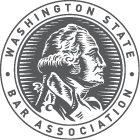Future Structure of the Washington State Bar Association
In light of recent constitutional challenges to integrated bar associations across the country, the Washington Supreme Court has asked the Washington State Bar Association Board of Governors to consider three questions and make a recommendation back:
- Does current federal litigation regarding the constitutionality of integrated bars require the WSBA to make a structure change?
- Even if the WSBA does not have to alter its structure now, what is the contingency plan if the U.S. Supreme Court does issue a ruling that forces a change?
- Litigation aside, what is the ideal structure for the WSBA to accomplish its mission?
UPDATE: The U.S. Supreme Court on April 4, 2022, denied certiorari for three cases challenging the integrated-bar structure: Taylor v. Heath (Michigan), Schell v. Darby (Oklahoma), and McDonald v. Borunda Firth (Texas).
Conclusion of the ETHOS Process
Nov. 16, 2022
On behalf of the Washington Supreme Court, the Chief Justice has informed WSBA leaders that the Court has reviewed the ETHOS recommendations and has declined to take any further action at this time.
Sept. 23, 2022
The Board of Governors approved the final ETHOS report, which will go to the Washington Supreme Court in October to conclude the study process. READ THE FINAL REPORT.
Aug. 19, 2022
The WSBA Board of Governors held its final meeting in the ETHOS process on Aug. 13, and approved its final recommendation to the Washington Supreme Court. In regards to the three questions below, the recommendations are:
- Current federal litigation does NOT require the WSBA to make a structural change.
- It will be important for WSBA and Washington Supreme Court leaders to act upon the actual decision if there is a ruling that forces structural change. Part of the process if such a ruling occurs will include looking at all the documents and information gathered for ETHOS.
- Litigation aside, the ideal structure is the current integrated model, which provides critical programs and services that work together to support the public and the profession.
Watch a 10-minute video snapshot of what’s happening and what’s at stake for the Washington State Bar Association.
ETHOS Meetings
Saturday, Aug. 13, 2022
Minutes | Meeting Materials | Late Meeting Materials |
Late Late Meeting Materials | Watch the Meeting
Saturday, July 23, 2022
Minutes | Agenda | Meeting Materials | Late Materials | Watch the Meeting
Saturday, June 18, 2022
Minutes | Agenda | Late Materials |
Late Late Materials |
Supplemental Materials | Watch the Meeting
Saturday, May 21, 2022
Minutes | Agenda & Materials |
Supplemental Materials | Watch the Meeting
Saturday, April 23, 2022
Minutes | Agenda | Materials | Late Materials | Watch the Meeting
Saturday, March 5, 2022
Minutes | Agenda & Materials |
Late Materials |
Supplemental Materials |
Watch the Meeting
Saturday,
Feb. 5, 2022
Minutes | Agenda |
Materials |
Watch the Meeting
Legal Background
In 2018, a U.S. Supreme Court decision — Janus v. American Federation of State, County, and Municipal Employees, Council 31 — undercut the foundation of a key case — Keller v. State Bar of California — that supports the constitutionality of the integrated bar structure. As a result, several lawsuits have cropped up throughout the country to challenge different integrated bar associations.
The main legal question under scrutiny is: Does it violate bar members’ First Amendment rights when they are required to be part of an integrated bar to practice law? Integrated bars, like the WSBA, perform both regulatory and professional-association functions. Concerns arise when an integrated bar engages in speech or activity that seems to stray from the bar’s primary duty of regulating the practice of law, and some members contend they should not be compelled to be associated with such speech/activity.
In the wake of Janus and associated lawsuits, in late 2018 the Washington Supreme Court convened the Washington Supreme Court Work Group on Bar Structure, which evaluated federal law developments, as well as the WSBA’s historical and existing structure and practices. In September 2019, the Work Group issued a final report with the recommendation to retain an integrated bar structure “for now.” Here is more information about the work and recommendation from that group.
So why are we looking at our structure again? Because legal challenges keep progressing. There are several recent conflicting decisions from circuit courts, which may be considered by the U.S. Supreme Court — and that decision would be binding for the WSBA. With that perspective, the Washington Supreme Court has asked the WSBA Board of Governors to again evaluate the structure of the WSBA and to make a recommendation about the three key questions above.
Resources
- Board of Governors discussion at the January 2022 meeting chartering the process to evaluate the bar structure
- Materials and recommendation from the 2018-2019 Bar Structure Work Group
- SCOTUS asked to nix mandatory bar association dues in two petitions (Reuters, November 2021)
- Lawyers Win Mandatory Bar Dues Battles in Texas, Louisiana (U.S. News, July 2021)
- Janus Doesn’t Block Mandatory Bar Association Dues (Reuters, June 2021)
- Bibliography of cases regarding the integrated bar structure
Input Opportunities
In addition to specific outreach opportunities and comment periods during meetings, you can send feedback to boardfeedback@wsba.org.
Questions?
Email boardfeedback@wsba.org
Want to Learn More?
WSBA Board of Governors and leaders are eager to talk to you! If you have a group that would like a presentation/question-and-answer session, or if you yourself would like to talk to someone to get more information, please contact WSBA Outreach Specialist Mike Kroner at michaelk@wsba.org or 206-727-8289. He will connect you with the right people, in a time and manner that work best for you.






